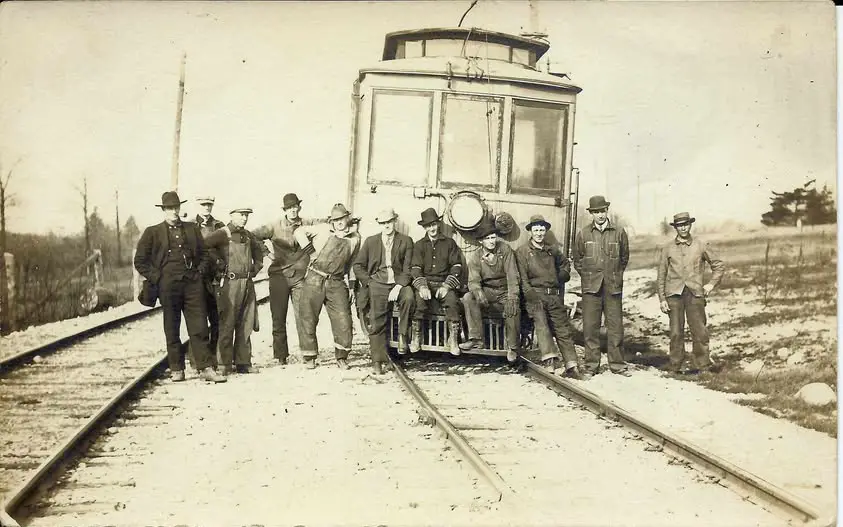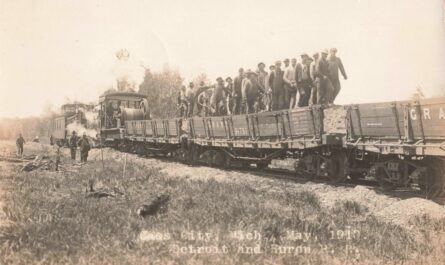Before the widespread adoption of automobiles, Michigan’s small towns faced significant transportation challenges. Dirt roads were often impassable, and horse-drawn buggies limited travel to short distances. While steam railroads existed, their service was infrequent and costly, primarily connecting major cities. There was a clear need for a better way to move people and goods. This need was met by a new technology: electricity, which led to the rise of Interurban Services in Michigan.
The Dawn of Electric Connections
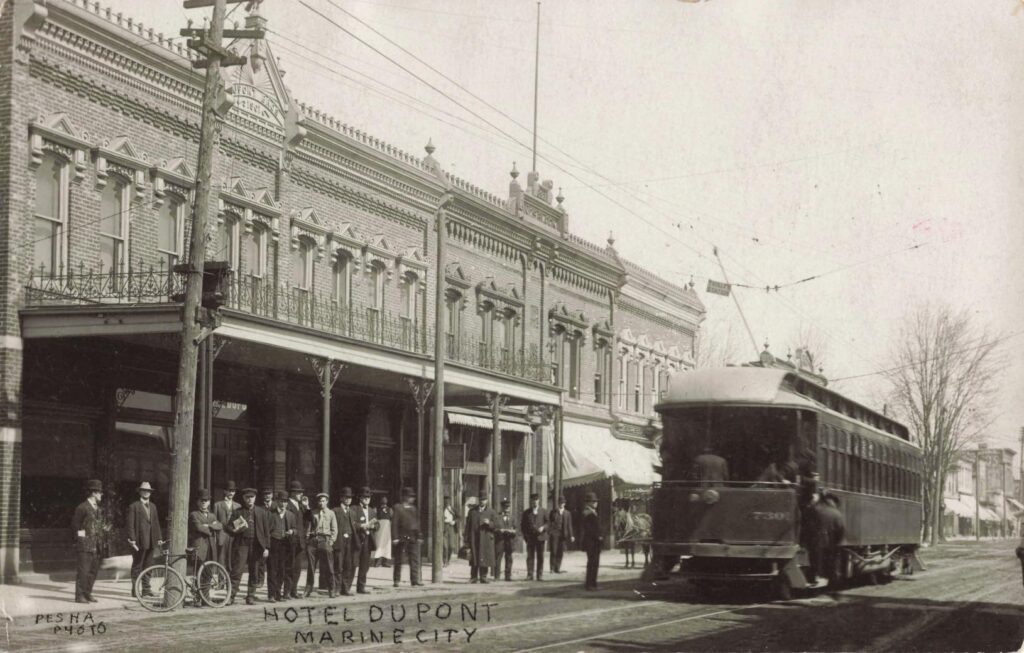
The late 1890s saw electricity emerge as a promising new technology. This era brought electric interurban railroads, defined as systems “existing or travelling between cities”. These electric railways extended urban streetcar systems into the countryside. This offered a new way to connect communities and was seen as a good business opportunity.
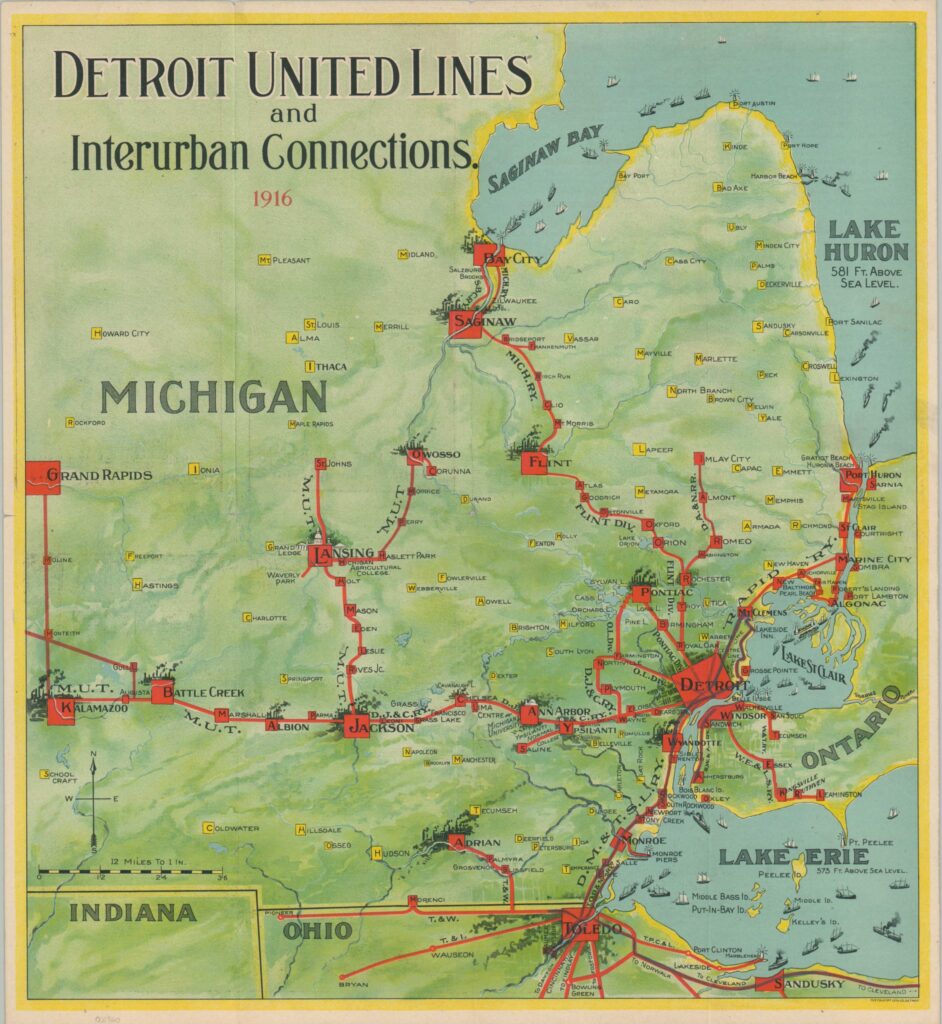
Michigan quickly adopted this new mode of transport. Between 1900 and 1916, interurban track mileage across the United States grew seven-fold. In Michigan, this meant a large system of lines that linked major cities with many smaller towns across the southern Lower Peninsula. The Detroit United Railway (DUR) was central to this system. Formed in 1900, the DUR became the largest interurban operator in the United States, with 902 miles of tracks at its busiest time.
These interurbans filled a crucial transportation gap. They operated between the long-distance focus of steam railroads and the local service of city streetcars. They combined good features from both: larger than streetcars, they could make more frequent stops than steam trains. Their electric cars could speed up quickly and handle steep hills and sharp turns easily. This allowed for many stops along their routes, keeping an average speed of about 25 miles per hour. Passengers and freight could get on or off almost anywhere, not just at stations miles apart like with steam railroads. Most interurban lines ran cars hourly, with more runs during busy times. This frequent service was a big improvement.
Video – Small Towns and Interurbans
Interurban Services in Michigan played a significant role in the state’s transportation history, connecting communities and providing access to employment opportunities and leisure activities. The interurban railway system in Michigan was part of a larger national network that developed in the late 19th and early 20th centuries. The first interurban line in Michigan was the Detroit, Monroe, and Toledo Short Line, which began operations in 1896.
Transforming Daily Life in Small Towns
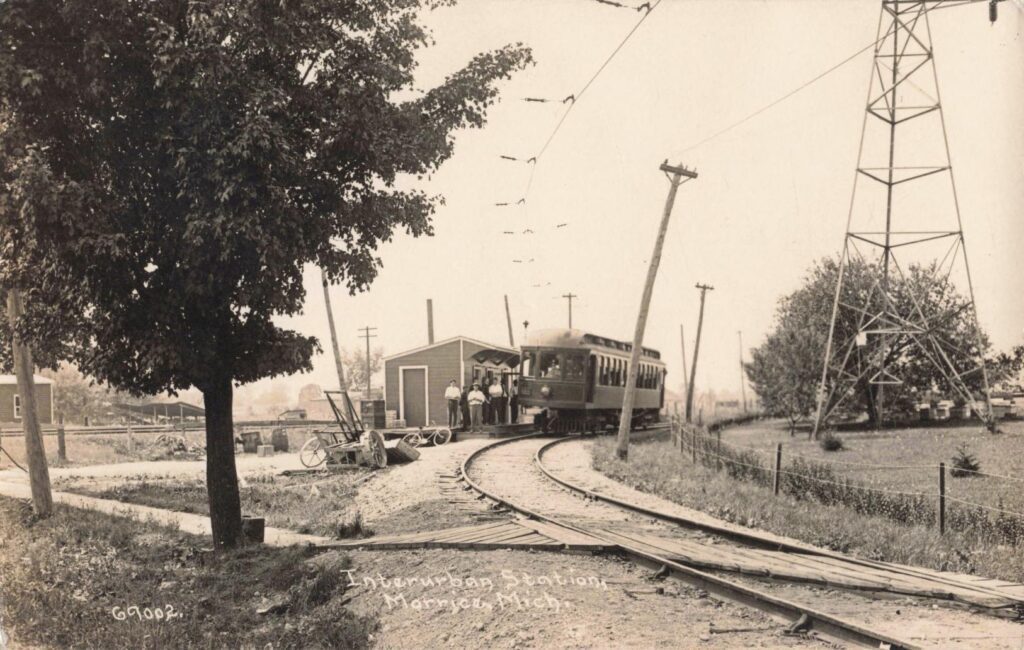
Interurban Services in Michigan brought new ways to travel. They offered frequent, reliable, and comfortable trips. Fares were much lower, usually half to two-thirds the cost of steam railroads for similar distances. This made travel possible for many who could not afford it before. A farmer’s wife or a small-town family could easily go to a larger city for shopping, a baseball game, or an evening at the theater without staying overnight. This access to goods, services, and entertainment in larger cities made small-town life better. It also helped connect the region, reducing rural isolation.
The interurban system was very helpful for agricultural communities. Farm families and workers, whose travel was limited by horses and wagons, gained new ways to move around. They could board an interurban at the nearest country crossing and travel to a town or city. This helped break the isolation of rural life. It was called the “liberating trolley.”
Crucially, interurbans offered reliable transportation all year, especially in harsh Michigan winters, when roads became impassable. This steady service ensured connections and business continued, no matter the weather.
Fueling Local Economies
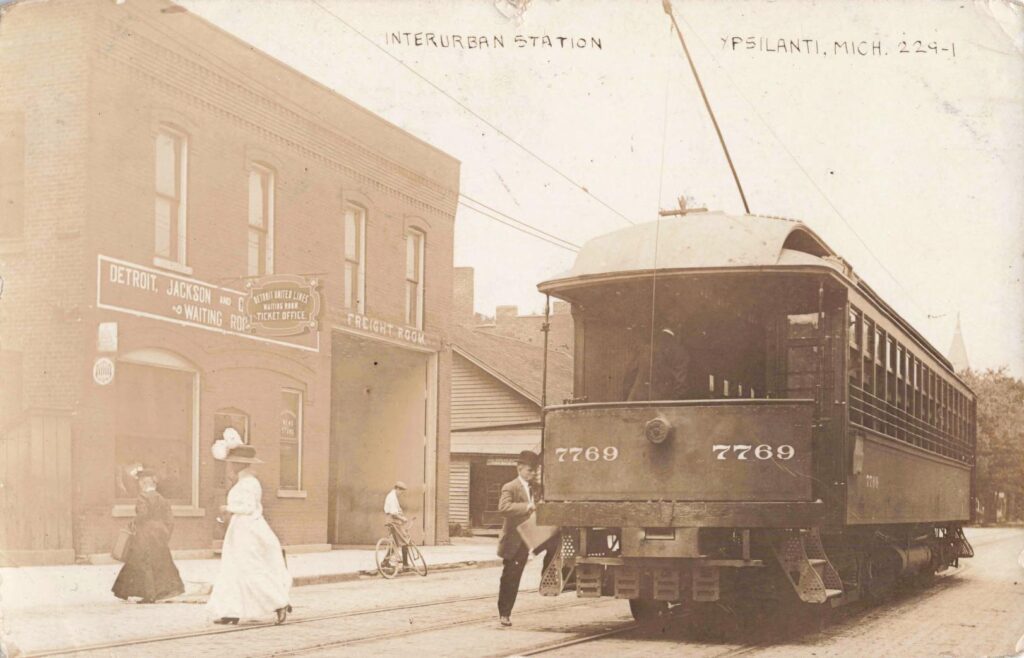
While passenger service was the main focus of interurban operations, freight services were important for their finances. They often made up about one-third of their revenue. Interurbans offered efficient express freight, mail, and milk delivery. Goods could be transported in hours instead of overnight. This was good for farm products, as the electric cars could stop often at loading sheds and platforms. This greatly improved farmers’ access to markets for fresh goods.
The improved travel also helped small-town merchants. They could stock more types of goods and fresh items. While some worried about competition from larger city stores, local businesses did not lose customers. Instead, the interurban created a “traveling habit” that helped all businesses. Farmers whose land was near the tracks often gave land for the railway. They expected better transportation and higher land value for their properties. This showed people understood the economic benefits of the interurban.
Interurban stations were more than places to board trains. They became essential community centers. They served as passenger depots, freight handling centers, and often had electrical substations. The interurban’s influence went beyond direct transportation revenue. It improved market access for farmers, allowed merchants to have more goods, and increased land values. These railways helped the economy grow in both small towns and larger cities. This led to a stronger regional economy.
The Decline and Lasting Impact
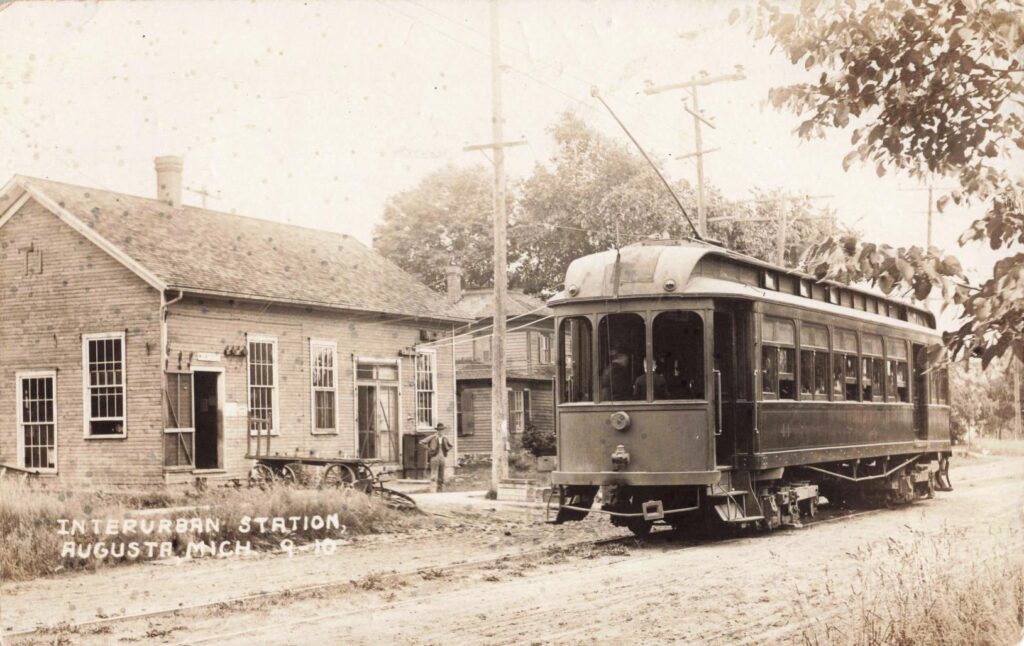
Despite their early success, interurban ridership quickly dropped starting in the mid-1920s. This was when Henry Ford’s Model T and the automobile industry became very popular. People chose the freedom and ease of cars. Public policy also changed. The gas tax, started in 1919, was meant to fund road construction, favoring private vehicles. More cars led to more road investment, making car travel even more appealing. This steadily reduced interurban ridership. Also, private interurban networks did not get public funding. They were seen as old technology, which hurt their ability to compete.
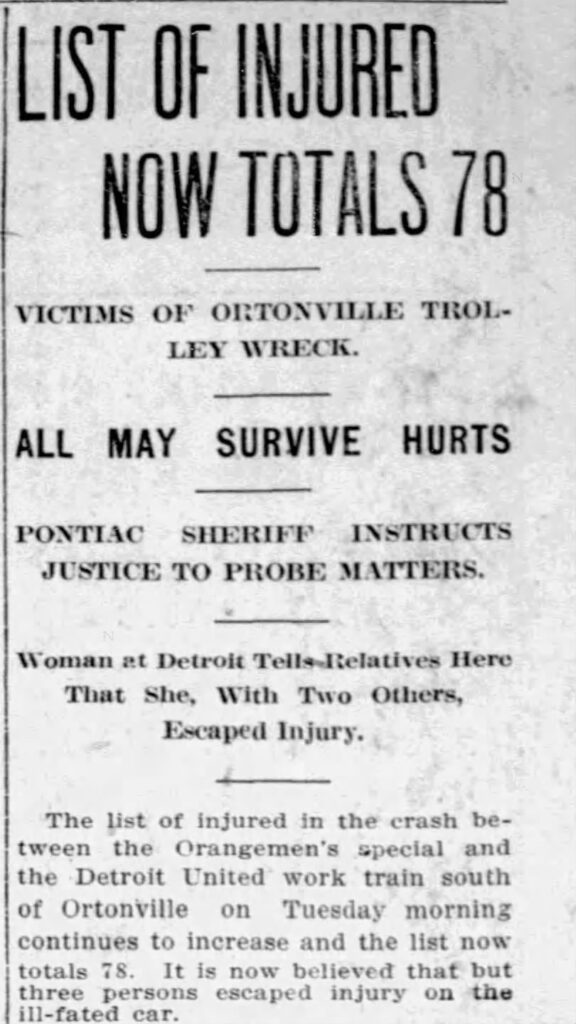
Besides cars, interurban companies faced other problems. These included financial issues, company mergers, worse service, and higher fares. Arguments with the steam railroad industry, especially about crossing their tracks, also caused problems. Safety was another factor. The quiet operation of electric interurbans, at first a benefit, became a safety issue. Many serious accidents happened, affecting both people and livestock. Collisions, like one near Ortonville in 1910 that killed one and injured 78, and another in Rives Junction in 1916 that killed two and injured twelve, showed these dangers. These accidents, financial problems, and competition created a negative public view that hurt the interurban system.
Most interurban lines in Michigan stopped operating by the 1920s and 1930s. The last interurban from Ypsilanti stopped service in 1929. They existed for a short time, a few for more than two decades, but their effect was significant. Those who experienced The interurban era remembered it as a “favorite way to travel”. Efforts continue to keep their history alive, including restoring old depots and interurban cars, like Merlin the #8 in Coopersville.
Interurban Services in Michigan, born from electric innovation, were a key, though brief, period of better connections and growth for small towns. They provided new ways to travel, linking places for business, culture, and social interaction. These electric lines moved passengers, freight, mail, and farm products. They changed daily life and regional economies. Their time was short, replaced by cars and changing public policy. But the interurbans left a lasting mark on Michigan’s growth. They helped the economy, broadened social experiences, and created a more connected network between Michigan’s communities. The story of Michigan’s interurbans shows the power of new ideas, how society adapts, and the human desire for connection.

